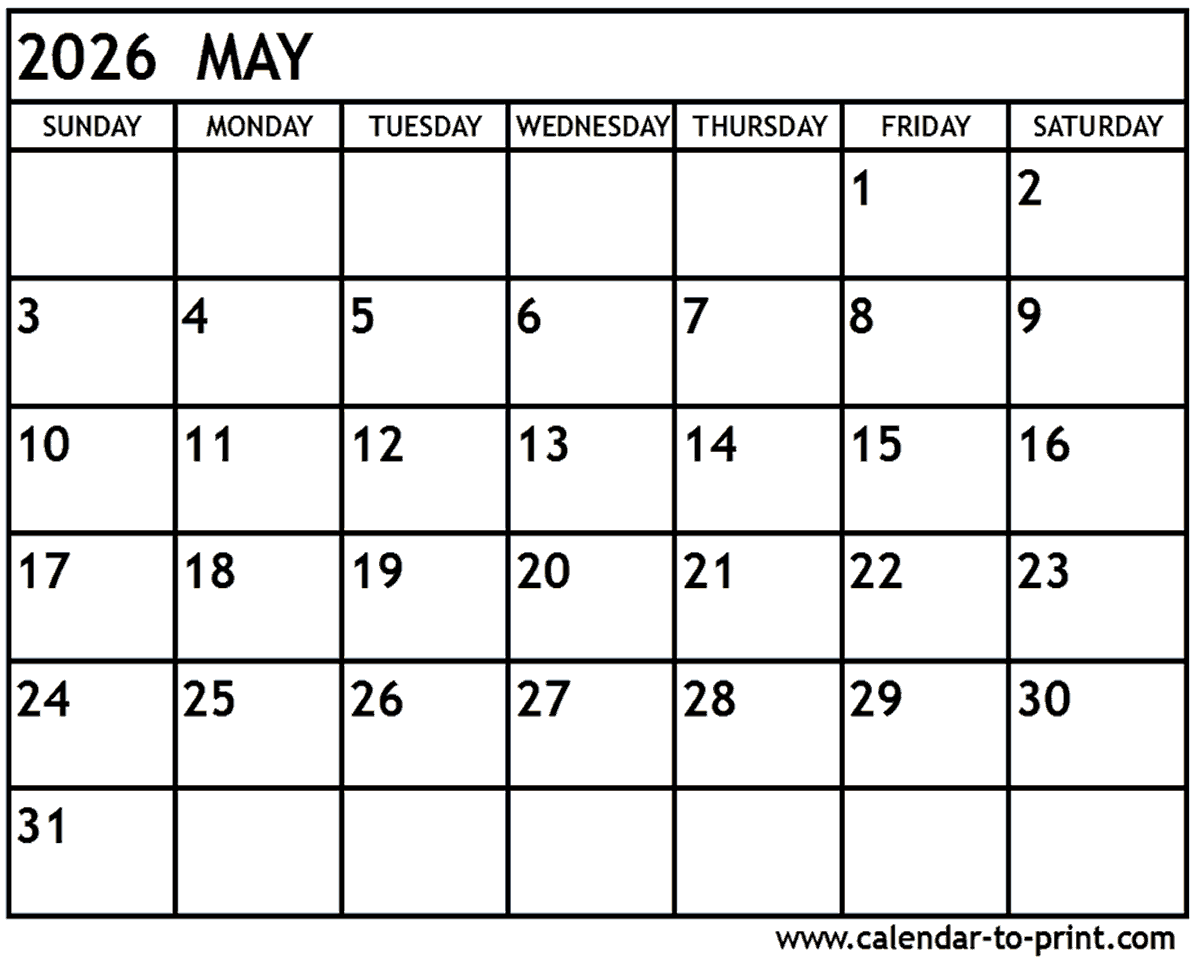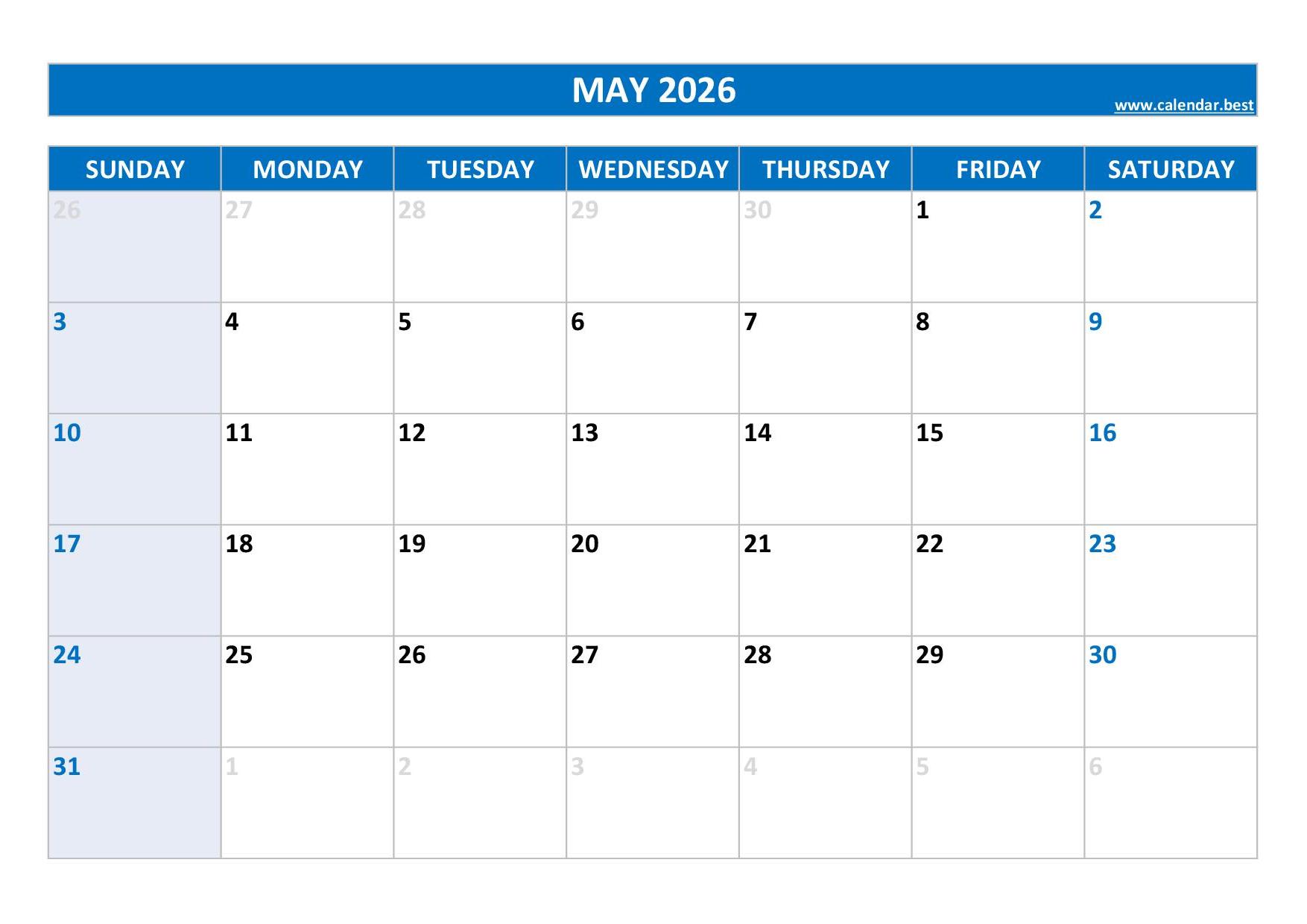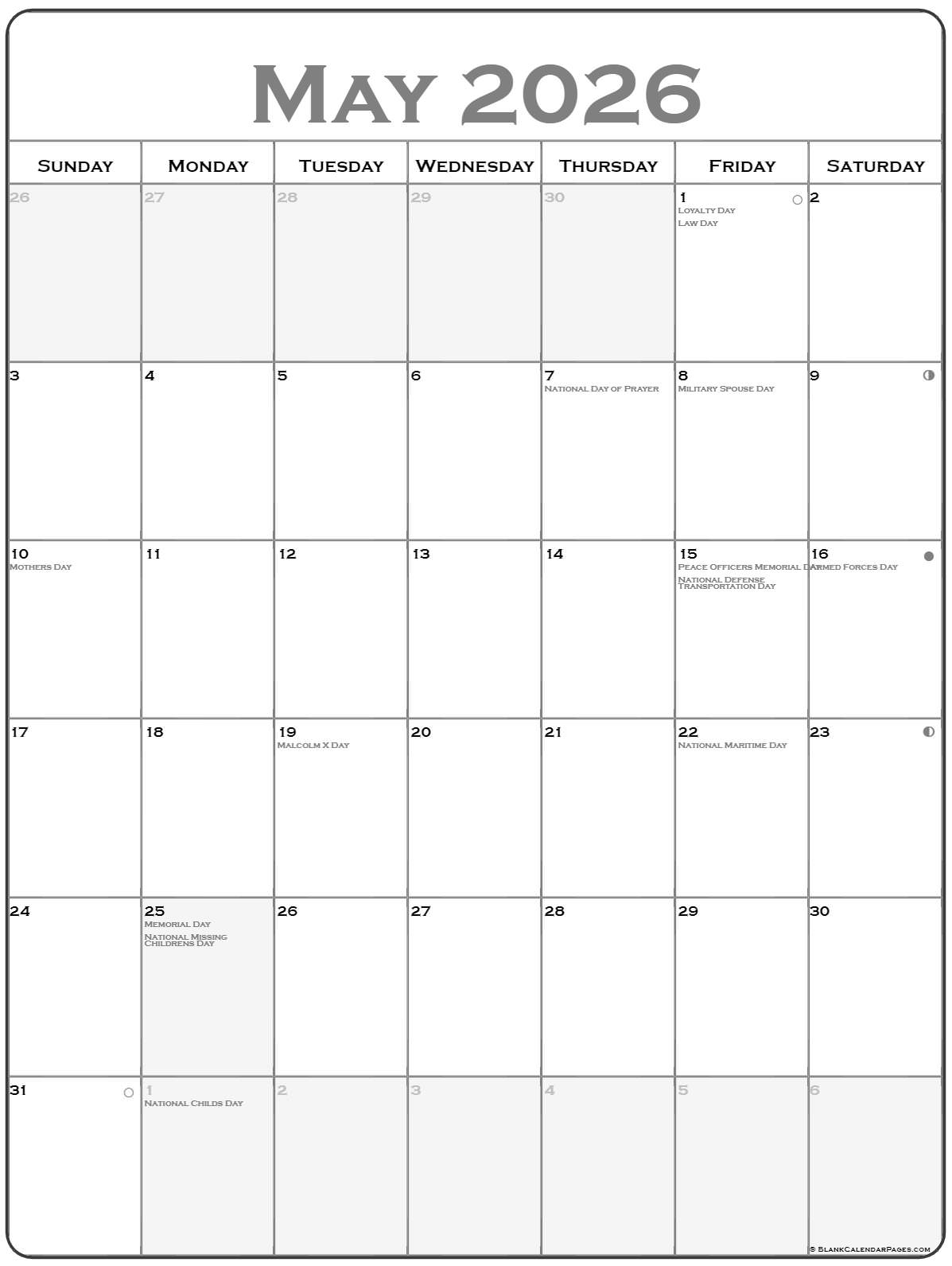.jpg)
Introduction
calendar for the month of may 2026 represents a significant subject within its field, encompassing a range of practices, traditions, or applications that shape daily life and broader cultural or professional landscapes. Understanding calendar for the month of may 2026 provides clarity about its background, its present relevance, and the way it continues to influence various aspects of society. The organization of time into months and days is a fundamental human endeavor, enabling coordination, foresight, and the marking of significant moments. As the world progresses, the utility of a well-structured temporal framework, particularly for a specific period such as May 2026, becomes increasingly apparent. This period, like any other, is replete with opportunities for personal development, professional advancement, and communal celebration, all of which are facilitated by a clear understanding of its chronological layout.
Definition and Origin of calendar for the month of may 2026
A calendar, at its core, is a system used to organize days for administrative, religious, commercial, or social purposes. It achieves this by giving names to periods of time, typically days, weeks, months, and years. The concept of dividing time dates back to ancient civilizations, which observed celestial cycles to track seasons and predict agricultural patterns. Early calendars were often lunisolar, combining observations of both the moon’s phases and the sun’s annual path. Over millennia, various cultures developed their own systems, leading to the diverse array of calendars seen throughout history. The Gregorian calendar, adopted widely today, is a solar calendar based on a 365-day year, with an extra day added every four years (leap year) to account for the Earth’s orbital period.
The specific focus on May 2026 places this general concept into a precise temporal context. May is the fifth month of the year in the Gregorian calendar, consisting of 31 days. Its name originates from Maia, a Roman goddess of fertility. For 2026, this particular month begins on a Friday and concludes on a Sunday. The structure of this specific calendar follows the established Gregorian pattern, providing a standardized framework for scheduling and planning across global societies. Understanding the definition of a calendar involves recognizing its function as a predictive and organizational tool, while its origin highlights humanity’s enduring need to measure and structure time. This particular monthly arrangement, therefore, is a direct descendant of these ancient practices, refined and standardized for contemporary use.
Importance of calendar for the month of may 2026 Today
The importance of the May 2026 calendar transcends mere date-keeping; it serves as an indispensable tool for personal, professional, and societal coordination. In an increasingly interconnected world, precise scheduling and awareness of upcoming events are paramount. For individuals, this specific monthly planner facilitates the organization of personal appointments, family gatherings, and leisure activities. It allows for proactive planning of vacations, birthdays, and other significant life events, ensuring that commitments are met and opportunities are not missed. The ability to visualize an entire month’s schedule empowers individuals to manage their time effectively, reducing stress and improving overall productivity.
Professionally, the May 2026 calendar is critical for business operations, project management, and workforce scheduling. Companies rely on it to set deadlines, coordinate meetings across different time zones, and plan product launches or marketing campaigns. Educational institutions use it to schedule exams, breaks, and academic events. Government bodies depend on it for legislative sessions, public service announcements, and the execution of civic duties. The month of May often includes significant public holidays, such as International Workers’ Day (May 1st), Mother’s Day (the second Sunday), and Memorial Day in the United States (the last Monday), which necessitate adjustments in work schedules, travel plans, and commercial activities. Awareness of these specific dates through the calendar ensures smooth transitions and avoids disruptions. The collective reliance on this shared temporal framework underpins the efficiency and harmony of modern society, making its accurate and accessible representation vital.
Benefits of calendar for the month of may 2026
The benefits derived from utilizing the May 2026 calendar are extensive, impacting various facets of life by fostering organization, predictability, and efficiency. One primary advantage is enhanced time management. By providing a clear overview of all 31 days, individuals and organizations can allocate time more effectively, prioritizing tasks and scheduling activities to optimize productivity. This foresight allows for the proactive identification of busy periods and quieter stretches, enabling better resource allocation and workload distribution.
Another significant benefit is improved coordination and communication. When all parties operate from a common understanding of the month’s schedule, misunderstandings are minimized, and collaborative efforts are streamlined. This is particularly crucial for teams working on projects, families planning events, or communities organizing festivals. The calendar serves as a central reference point, ensuring everyone is aligned on dates, deadlines, and commitments. Furthermore, the use of this specific calendar aids in financial planning. Knowing when paydays, bill due dates, or significant expenditure events (like holiday travel or gift purchases) occur within May 2026 allows for more prudent budgeting and financial management, preventing unexpected shortfalls.
Moreover, the calendar promotes mental well-being by reducing anxiety associated with uncertainty. Having a clear roadmap for the month helps individuals feel more in control of their schedules and responsibilities. It allows for the integration of self-care activities, ensuring a balance between work and personal life. For instance, knowing the dates of public holidays within the month facilitates planning for rest and rejuvenation. Finally, it supports the tracking of progress and goal achievement. Whether it is a personal fitness goal, a professional project milestone, or an academic target, marking progress on the calendar provides motivation and a tangible record of accomplishments throughout the month.
Applications of calendar for the month of may 2026
The applications of the May 2026 calendar are diverse and pervasive, extending across personal, professional, educational, and civic domains. In personal life, it is instrumental for managing daily routines, scheduling appointments with doctors or dentists, planning social engagements, and marking family events such as birthdays or anniversaries. It assists in organizing travel itineraries, ensuring timely departures and arrivals, and coordinating lodging. For students, the calendar is essential for tracking assignment due dates, exam schedules, and extracurricular activities, helping them to manage their academic workload effectively.
Professionally, businesses leverage the May 2026 calendar for strategic planning, setting project timelines, and managing inventory. Sales teams use it to schedule client meetings and follow-ups, while human resources departments utilize it for onboarding new employees, managing leave requests, and scheduling training sessions. The month of May, with its various holidays, often requires specific planning for retail promotions or service availability, making the calendar an indispensable tool for operational adjustments. Event planners rely heavily on the calendar to book venues, coordinate vendors, and publicize events well in advance.
In the civic sphere, government agencies use the calendar to schedule public hearings, community outreach programs, and administrative deadlines. Local organizations apply it to plan fundraising events, volunteer drives, and community gatherings. For example, the observance of Memorial Day in May requires coordinated efforts for parades, ceremonies, and public commemorations. Furthermore, digital versions of the calendar are integrated into various software applications, from email clients to project management tools, demonstrating its fundamental role in modern digital infrastructure. This widespread application underscores its utility as a foundational element for organizing and executing activities across virtually all sectors of society.
Challenges and Future of calendar for the month of may 2026
While the May 2026 calendar serves as an invaluable organizational tool, its effective utilization can present certain challenges, and its future is subject to ongoing evolution. One common challenge involves maintaining consistency across different calendar platforms. With the proliferation of digital calendars (e.g., Google Calendar, Outlook Calendar, Apple Calendar) alongside traditional physical planners, syncing events and ensuring all schedules are up-to-date can be complex, leading to potential conflicts or missed appointments. Over-scheduling is another challenge, where the ease of adding events to a digital calendar can lead to an overloaded schedule, resulting in burnout or decreased productivity.
Another aspect to consider is the integration of personal and professional commitments. For many, balancing work-related deadlines and meetings with personal obligations and family events within the same monthly framework requires careful planning and prioritization. Cultural differences in holiday observances, even within the same month, can also pose coordination challenges for international teams or multicultural communities.
Looking towards the future, the evolution of calendar tools is likely to continue focusing on greater integration, predictive capabilities, and personalization. Artificial intelligence (AI) may play a larger role in suggesting optimal scheduling based on individual preferences, energy levels, and external factors like traffic or weather. Enhanced natural language processing could allow users to simply speak their intentions, and the calendar would intelligently schedule and coordinate. Furthermore, augmented reality (AR) could offer new ways to visualize and interact with schedules, projecting monthly layouts onto physical spaces. The emphasis will increasingly be on creating a seamless, intuitive, and highly adaptive scheduling experience that minimizes friction and maximizes efficiency, making the May 2026 calendar and its successors even more powerful tools for managing time.
FAQs about calendar for the month of may 2026
Q1: What is calendar for the month of may 2026?
A1: The calendar for the month of May 2026 refers to the specific arrangement of days within the fifth month of 2026 according to the Gregorian calendar. It details the 31 days of May, starting on a Friday and ending on a Sunday, including any public holidays or significant observances within that period.
Q2: Why is calendar for the month of may 2026 important?
A2: This specific calendar is important because it provides a structured framework for planning and coordinating activities for individuals, businesses, and organizations. It helps manage appointments, deadlines, events, and holidays, ensuring efficient time management and reducing scheduling conflicts.
Q3: What are the main benefits of calendar for the month of may 2026?
A3: The main benefits include improved time management, enhanced coordination and communication among groups, better financial planning, reduced stress through clear scheduling, and support for tracking progress towards goals throughout the month.
Q4: How can calendar for the month of may 2026 be applied in daily life?
A4: It can be applied in daily life for scheduling personal appointments, managing academic assignments, planning professional meetings, organizing social events, tracking bill due dates, and preparing for holidays such as Mother’s Day or Memorial Day.
Q5: What challenges are associated with calendar for the month of may 2026?
A5: Challenges include syncing across multiple digital and physical platforms, avoiding over-scheduling, effectively balancing personal and professional commitments, and navigating cultural differences in holiday observances, especially for international coordination.
Tips for calendar for the month of may 2026
Understand the fundamentals.
Familiarize oneself with the basic layout of the May 2026 calendar, noting the start and end days of the week, and identifying any major public holidays or significant dates like Mother’s Day or Memorial Day early on. This foundational knowledge is crucial for effective planning.
Focus on practical use.
Integrate the calendar into daily routines. Use it to schedule not only critical appointments and deadlines but also regular activities like exercise, meal planning, and dedicated relaxation time. This ensures a balanced and well-managed month.
Stay updated on new trends or research.
While a specific monthly calendar is static, the tools and methods for using calendars evolve. Explore new digital calendar features, integration options with other productivity apps, or time management techniques that can enhance the utility of the May 2026 schedule.
Avoid common mistakes.
Prevent common pitfalls such as over-scheduling, failing to account for travel time between appointments, or not regularly reviewing and updating the calendar. Double-checking entries and building in buffer times can significantly improve accuracy and reduce stress.
Adopt a long-term approach.
While focusing on May 2026, consider how this month fits into broader annual goals. Use the calendar not just for immediate tasks but also as a stepping stone for longer-term objectives, ensuring that monthly activities contribute to overarching personal or professional aspirations.
Conclusion about calendar for the month of may 2026
The continuing importance of calendar for the month of may 2026 cannot be overstated. It serves as a fundamental pillar for organizing human activity, providing a structured framework that facilitates planning, coordination, and execution across all aspects of life. Its cultural significance is evident in the observance of holidays and traditions, while its professional utility underpins the efficiency of businesses and institutions. On a personal level, a well-managed May 2026 calendar empowers individuals to navigate their responsibilities, pursue their goals, and allocate time for personal well-being.
While challenges such as digital synchronization complexities and the risk of over-scheduling exist, the inherent benefits of a clear, universally understood temporal structure far outweigh these obstacles. The evolution of calendar technology promises even more intuitive and integrated solutions in the future, further cementing its role as an indispensable tool. As society continues to advance, the ability to effectively manage and understand the flow of time, epitomized by the specific layout of May 2026, remains a central element of progress and relevance, ensuring that this essential organizational concept continues to shape and enhance daily existence.







Leave a Reply